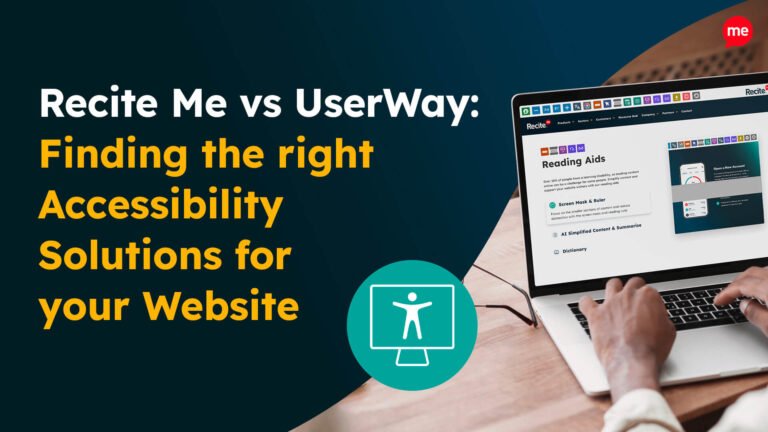Get Your Free Accessibility & Inclusion Toolkit
Download NowThe internet should be for everyone, but not all websites and apps are built that way. That’s why we need the Web Content Accessibility Guidelines (WCAG). You may have heard of WCAG 2.0 and WCAG 2.1. They both set important standards, but they’re not the same. WCAG 2.0 was published back in 2008, while WCAG 2.1 arrived in 2018 to reflect how much the web had changed with smartphones, apps, and more diverse user needs.
In this guide, we’ll unpack how WCAG 2.1 builds on WCAG 2.0, the role both play in accessibility legislation, which standard your organisation should prioritise, and the tools that can help you achieve compliance.
Understanding the basics of WCAG 2.0 and WCAG 2.1
For web accessibility, the Web Content Accessibility Guidelines (WCAG) serve as the global gold standard. Published by the World Wide Web Consortium (W3C), these guidelines define how digital content should be designed so that everyone, including people with disabilities, can interact with it effectively.
WCAG 2.0 came out in 2008 and introduced a clear framework of accessibility rules, organised into three compliance levels: A, AA, and AAA. WCAG 2.0 has since been adopted by governments and organisations around the world as the benchmark for accessibility.
But the internet of 2008 looks very different from today’s mobile-first, app-driven, multimedia-focused environment. Recognising this, the W3C began work on an update in 2017, releasing WCAG 2.1 in June 2018. This version did not replace WCAG 2.0 but extended it, building on its foundations while addressing gaps, particularly in mobile accessibility, low vision support, and cognitive or learning disabilities.
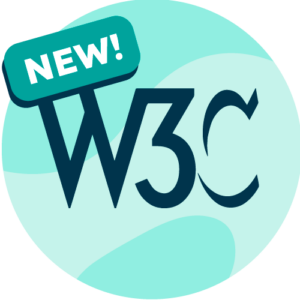
How WCAG 2.1 builds on the scope of 2.0
The biggest change between WCAG 2.0 and WCAG 2.1 is scope. WCAG 2.0 introduced 61 accessibility criteria organised under four key principles: perceivable, operable, understandable, and robust (often abbreviated as POUR). These principles ensure content can be perceived, interacted with, and understood by as many users as possible.
WCAG 2.1 kept all 61 criteria as is, but added 17 new success criteria, bringing the total to 78. These additions are where the modern web’s evolving accessibility needs are addressed.
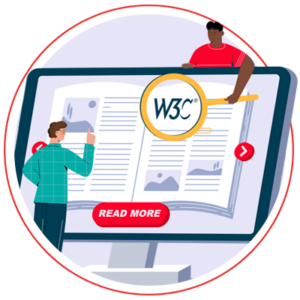
The new criteria specifically target:
- Mobile accessibility – WCAG 2.0 was published before smartphones truly took off. WCAG 2.1 adds requirements for reflow and touch, stylus, and voice support.
- Low vision users – WCAG 2.1 builds on WCAG 2.0 with guidance on text spacing, contrast for interface elements, and preserving content when text is resized.
- Cognitive and learning disabilities – WCAG 2.1 introduces criteria to minimise distractions, simplify navigation, and protect user data in forms, including input purpose and time limit requirements.
By extending the 2.0 framework rather than overhauling it, WCAG 2.1 offers a seamless transition for organisations already working toward accessibility compliance. Think of it as WCAG 2.0 plus, everything you already know, but more inclusive for the realities of today’s digital experience.
Get a free automated accessibility check of your websites homepage. This will identify and highlight any compliance issues on your website. Followed by recommendations on how to implement the necessary changes to make your website more accessible.
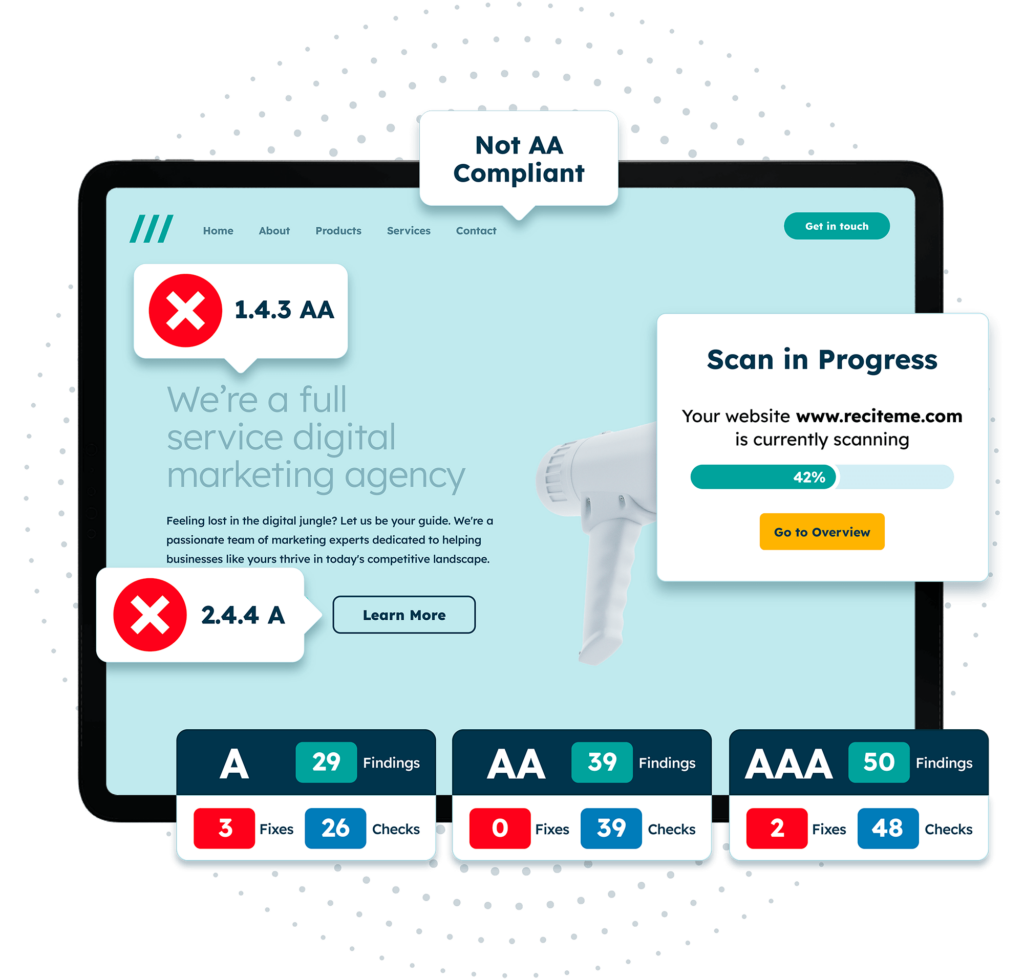
What were the 17 new success criteria added to WCAG 2.1
As we’ve already mentioned, there are a total of 17 new success criteria added to the WCAG 2.1. Let’s take a look at how they impact the standards for digital accessibility:
Guideline 1.3 – Adaptable
- 1.3.4 Orientation (AA) – Don’t restrict to one screen orientation.
- 1.3.5 Identify Input Purpose (AA) – Use programmatic identification for input fields.
- 1.3.6 Identify Purpose (AAA) – Identify the purpose of UI components and icons.
Guideline 1.4 – Distinguishable
- 1.4.10 Reflow (AA) – Support 400% zoom without horizontal scroll.
- 1.4.11 Non-text Contrast (AA) – UI components and graphics need 3:1 contrast ratio.
- 1.4.12 Text Spacing (AA) – Users can override text spacing without losing content/function.
- 1.4.13 Content on Hover or Focus (AA) – Additional content shown on hover/focus must be dismissible,
Guideline 2.1 – Keyboard Accessible
- 2.1.4 Character Key Shortcuts (A) – Provide a way to turn off or remap single-key shortcuts.
Guideline 2.2 – Enough Time
- 2.2.6 Timeouts (AAA) – Warn users of inactivity timeouts that could cause data loss.
Guideline 2.3 – Seizures and Physical Reactions
- 2.3.3 Animation from Interactions (AAA) – Let users disable motion-triggered animations.
Guideline 2.4 – Navigable
- 2.4.11 Focus Appearance (Minimum) (AA) – Ensure visible focus indicator meets minimum size/contrast.
- 2.4.12 Focus Appearance (Enhanced) (AAA) – Larger and higher-contrast focus indicators.
- 2.4.13 Page Break Navigation (A) – Provide a way to navigate by page break markers in reflowable content.
Guideline 2.5 – Input Modalities
- 2.5.1 Pointer Gestures (A) – Provide single-pointer alternatives for complex gestures.
- 2.5.2 Pointer Cancellation (A) – Avoid irreversible pointer actions on down-event.
- 2.5.3 Label in Name (A) – Accessible name must contain the visible text label.
- 2.5.4 Motion Actuation (A) – Provide alternatives to motion-based controls.
WCAG 2.0 and WCAG 2.1 in accessibility legislation
Understanding which version of WCAG applies in your region is crucial for compliance.
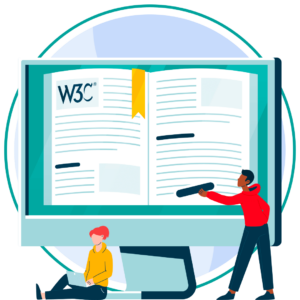
Legislation using WCAG 2.0
Here are a few digital accessibility laws that require WCAG 2.0 compliance:
- Section 508 of the Rehabilitation Act – Federal agencies in the United States and contractors must make digital content accessible, referencing WCAG 2.0 AA.
- Accessible Canada Act – Requires websites and online content in Canada to meet WCAG 2.0 Level AA standards.
Legislation using WCAG 2.1
Here are a few digital accessibility laws that require WCAG 2.1 compliance:
- Public Sector Bodies Accessibility Regulations – Requires UK public sector websites and apps to meet WCAG 2.1 AA.
- European Accessibility Act – Extends WCAG 2.1 AA standards across a wide range of products and services by 2025.
- Americans with Disabilities Act – Although not explicitly referenced in the Act, the Department of Justice has established WCAG 2.1 AA as the compliance standard for web and mobile content.
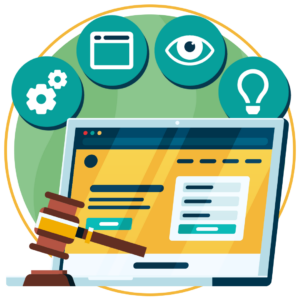
Should you prioritise WCAG 2.0 or WCAG 2.1?
Since WCAG 2.1 is the more modern and up-to-date sett of guidelines, we’d recommend prioritising this standard.
By adopting WCAG 2.1 Level AA, your organisation will:
- Cover WCAG 2.0 automatically – WCAG 2.1 is backward-compatible.
- Address modern accessibility needs – including mobile, low-contrast UIs, and complex forms.
- Stay legally aligned – UK, EU, and US regulations are shifting to WCAG 2.1 AA.
- Future-proof your site – easing the transition to WCAG 2.2 and 3.0.
Organisations that stop at WCAG 2.0 may technically be compliant today but risk falling behind quickly. Worse, they may leave users excluded, particularly people who rely on mobile devices, have low vision, or live with cognitive and learning disabilities.
Tools to help you with your WCAG compliance journey
Accessibility can feel overwhelming at first, there are technical guidelines, legal obligations, and a lot of details to get right. The good news is, you don’t have to figure it all out alone. The right tools can simplify the process and help you embed accessibility into your everyday workflow.
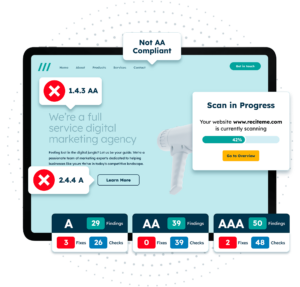
1. Free automated accessibility check of your website
Think of this as a quick “health check” for your digital presence. Our website accessibility checker highlights the most common accessibility gaps (such as missing alt text, low-contrast text, or form fields without labels). While automated testing won’t catch everything, it gives you an instant snapshot of where your site stands against WCAG and what should be tackled first.
2. Download a website accessibility checklist
Compliance can be tricky without a clear roadmap. Our web accessibility checklist turns WCAG requirements into practical, plain-language tasks you can assign to your design, development, and content teams. Use it to track progress, prevent issues from slipping through the cracks, and make accessibility part of your project workflow rather than a last-minute fix.
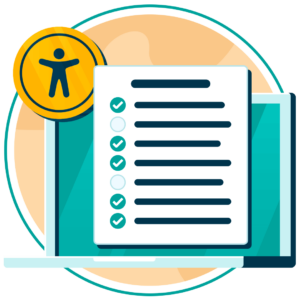
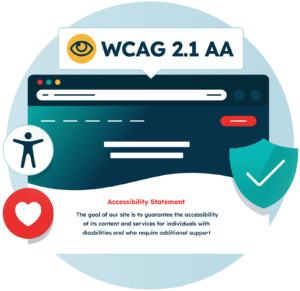
3. Showcase your commitment with an accessibility statement
An accessibility statement does two things: it demonstrates compliance with legal obligations, and it signals to your users that you take inclusion seriously. Our free statement template makes it easy to write one that’s clear, professional, and tailored to your organisation. Publishing this statement builds trust and gives users a way to reach out if they encounter barriers.
4. Provide free accessibility training to your staff
Accessibility is a shared responsibility. From designers choosing colour palettes to developers coding interactive features and content creators writing blog posts, everyone has a role to play. Our free website accessibility training helps teams understand accessibility in the context of their work, so best practices become second nature in every project. By training your staff, accessibility is built into your workflow from the start, instead of being added as an afterthought.
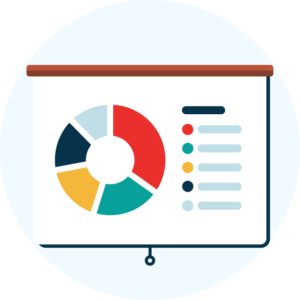
Are there any other WCAG versions to be aware of?
Yes. While WCAG 2.1 is the most widely adopted today, the W3C continues to evolve accessibility standards:
- WCAG 2.2 was published in 2023 and added additional success criteria to address gaps in 2.1, particularly for mobile and cognitive accessibility.
- WCAG 3.0 is currently in development. Unlike the incremental updates from 2.0 to 2.2, WCAG 3.0 will represent a major rethinking of accessibility guidelines, with broader coverage of user needs and new scoring models.
Staying aware of these updates ensures your organisation can adapt early and maintain leadership in accessibility.
Our 40-page Digital Accessibility & Inclusion Toolkit helps businesses break down online barriers and make a real impact. It offers practical advice on all aspects of digital accessibility, from writing an accessibility statement to accessible website tips and inclusive hiring.
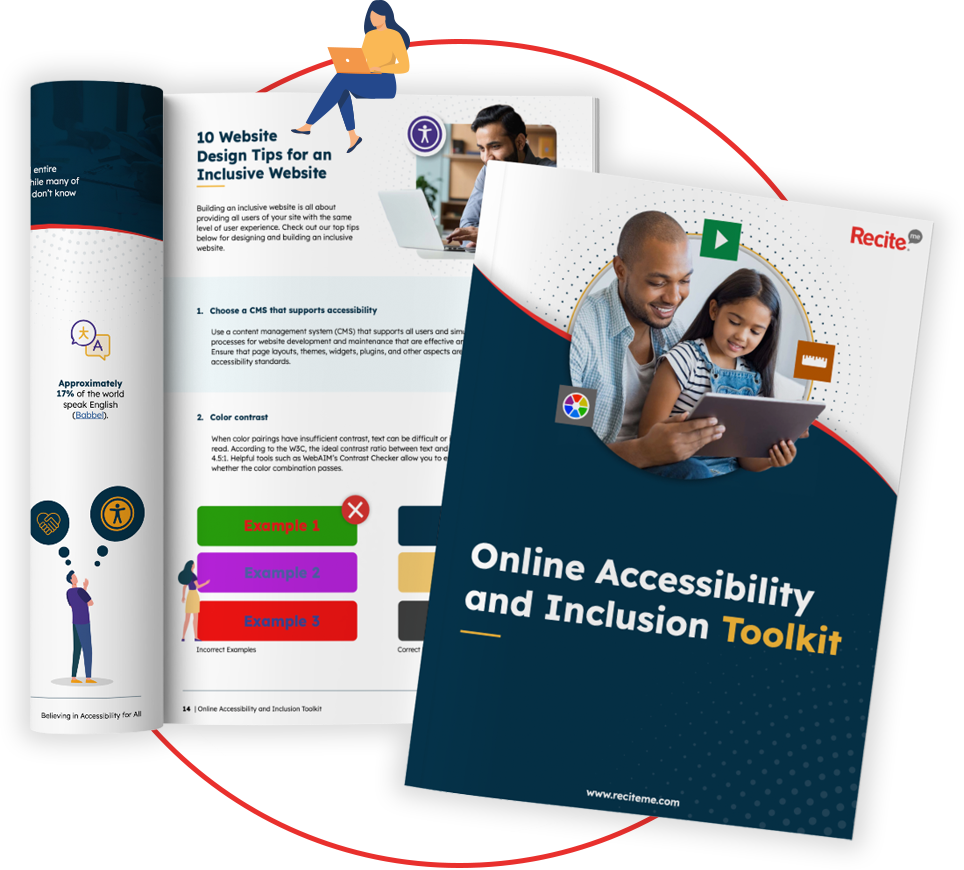
Conclusion: The importance of WCAG 2.0 and WCAG 2.1
WCAG 2.0 set the standard, but WCAG 2.1 extends that standard to better reflect how we use the web today, on mobile devices, with diverse input methods, and across a wider range of user needs.
For organisations, the path forward is clear: focus on achieving WCAG 2.1 Level AA compliance while keeping an eye on future updates to the guidelines. Doing so not only ensures legal compliance in multiple jurisdictions but also creates a more inclusive and user-friendly experience for everyone.
WCAG 2.0 Vs WCAG 2.1 FAQs
Looking for a recap or quick summary? Here are a few of our most frequently asked questions to help you get to grips with the essentials:
Is WCAG 2.1 a replacement for WCAG 2.0?
No, WCAG 2.1 builds on WCAG 2.0 by adding new success criteria while keeping all of 2.0 intact.
If my website is WCAG 2.0 compliant, do I need to upgrade to 2.1?
Yes, if you want to stay aligned with modern standards and legislation. WCAG 2.0 compliance is a good foundation, but WCAG 2.1 covers critical areas like mobile and cognitive accessibility.
What WCAG compliance level should I aim for?
Most accessibility legislation requires WCAG 2.1 Level AA, which balances practicality with inclusivity. Level AAA is considered best practice but is often not fully achievable across all content.
If I meet WCAG 2.1 AA, do I also meet WCAG 2.0 AA?
Yes, if your website meets WCAG 2.1 Level AA, it also meets WCAG 2.0 Level AA. That’s because WCAG 2.1 is backward-compatible, everything in 2.0 is included within 2.1.


